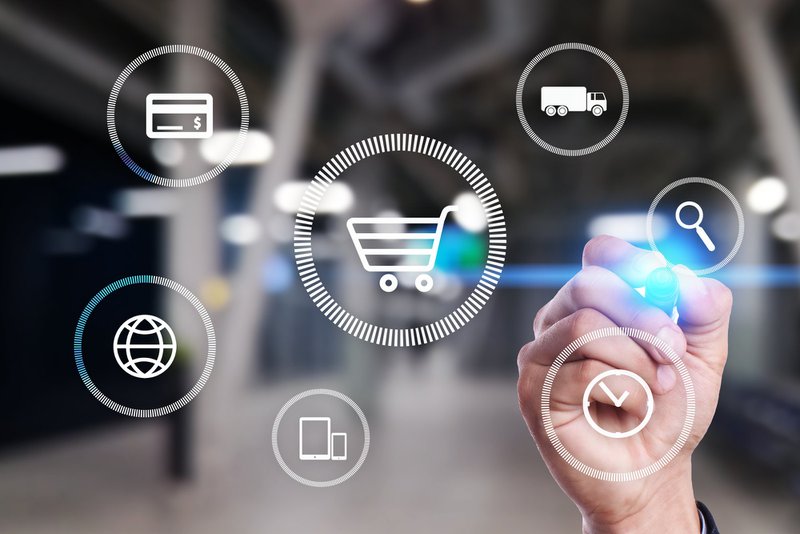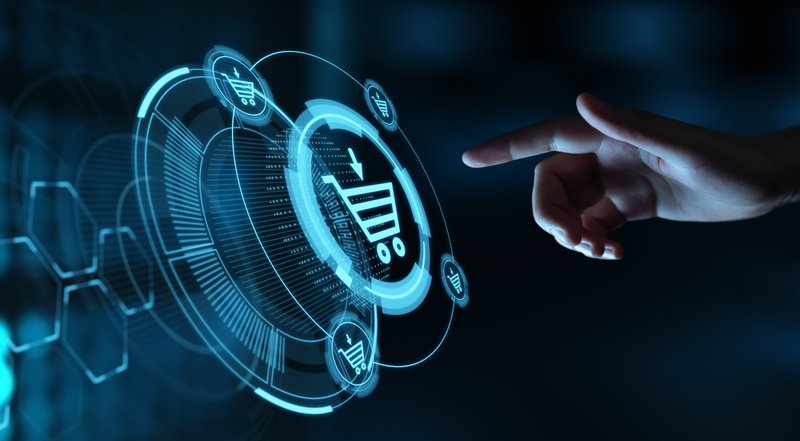With online shopping becoming consumers’ preferred shopping option, headless commerce has emerged powerfully to help businesses scale across channels.
eCommerce has evolved over time, with that evolution more pronounced and fuelled by pandemic-driven changes over the last two years. Many businesses initially migrated to the digital space as a means of survival, but they eventually found their footing and established well-performing eCommerce stores.
60% of customer interactions with companies now happen online. Customers are clamoring to connect more meaningfully with brands, and want to transact through multiple touchpoints. With consumer demands constantly shifting, the eCommerce space is ever-evolving.
Traditional eCommerce platforms are struggling to keep pace, and they need to implement new tools and technologies to make customers’ buying journeys more seamless, more streamlined.
Smart solutions like smart voice assistants and in-store interfaces provide customers with new ways to engage with brands, discover products and services, and make purchases. Businesses that have hopped onto this trend are experiencing success, while those that did not are struggling to cope.
Such solutions often require the use of complex technologies like an Internet of Things (IOT) device or a back-end solution built from scratch. That is why this trend is growing in popularity and gaining solid traction in the eCommerce space.
This guide will discuss what headless commerce is, how it works, what type of businesses need it, and how it can transform businesses operations in the eCommerce space.
What is Headless Commerce?


The pandemic has had a massive impact on businesses and consumers alike.
On the buyer’s end, the journey has evolved in such a way that consumers are more likely to purchase from a brand if they have an efficient digital commerce strategy. Headless commerce has emerged as one of the leading buzzwords in the eCommerce space, but can be a bit confusing for those without an IT background.
Simply put, this is an eCommerce architecture where the front and back ends of an eCommerce application are separated. This allows brands both the flexibility and freedom to design their platforms however they chose.
Today’s customers are looking for an omnichannel shopping experience, and this is a way for businesses to effectively provide that.
Top Benefits of Headless Commerce
Headless commerce is touted to be the next big thing for eCommerce.
For now, larger enterprises are adopting headless commerce into their strategies, but this is expected to trickle down to smaller-scale businesses soon. Adopting a headless commerce approach gives you the agility to quickly and frequently update the front-end of your web store (the User Interface (UI)—which is everything you see on an eCommerce website) to continuously keep up with your customers’ changing needs—all without impacting your back-end operational systems.
Doing so can be time-consuming. So much so that even big brands that use a conventional eCommerce platform only update their front-end experience every week. Amazon, meanwhile, which uses a headless commerce solution, is able to deploy updates every 11.7 seconds.
Easy Adoption for Employees


Whenever it comes to adopting new technologies, many organizations are hesitant because these technologies may involve a steep learning curve. Headless commerce, however, simplifies everything and makes all processes easily understandable and accessible.
Heightened Flexibility
Customers tend to expect highly customized touchpoints that accommodate all their wants and needs. With headless commerce, businesses can adjust their front end seamlessly and efficiently. This will drastically improve the customer experience, potentially leading to more conversions.
Quicker and More Efficient Than Traditional eCommerce Models
Headless commerce requires almost no downtime. Businesses can immediately create and launch front-end experiences to resonate with their target audiences more deeply. Because market trends shift on a dime, using headless commerce may help you keep up with the market more easily.
Headless Commerce vs Traditional Commerce
While traditional commerce models have been effective thus far, it's falling short in the face of the ever-evolving customer and market demands. To keep up, modern businesses need to be flexible. Headless commerce provides that agility.


With the front-end and back-end processes separated, headless commerce allows developers to build customized customer experiences, fast. Traditional eCommerce models, on the other hand, typically use a monolithic model. While effective for larger enterprises, this approach is less efficient and more costly than a headless commerce model.
As a business owner, you need to constantly look for tools and technologies that will help you optimize your processes and reach your business goals more efficiently.
Which Businesses Should Switch to Headless Commerce?
Before anything, it‘s important to first determine whether your business needs a headless commerce solution in the first place.
If your business is just starting out, for example, not yet earning big and handling an average number of transactions monthly, stick with the traditional eCommerce model. However, if your business is scaling or is already a large enterprise handling thousands of transactions a month, you may need to start bringing in a headless commerce solution.
Headless commerce is best for businesses that want to minimize the strain on their back-end support, explore various front-end experiences to see which one resonates best with their customers, and want more freedom in designing their platform’s UI and UX.


Take Your eCommerce to the Future with Zobrist
In the online retail world, speed and visual appeal are critical to the user experience. The beauty of headless commerce is that the storefront is completely separated from the back-end infrastructure (back-end framework, coding, etc.).
With the headless approach, development teams can change the front-end layer and put the changes up onto the website faster than ever. Now that the front-end is separated from the back-end, all the lengthy updating and testing of the changes with the core commerce pieces and integrations on the back end no longer needs to take place. They’re now independent of one another. That makes your site faster and more responsive.
Zobrist is a leading producer of headless eCommerce storefront development and a market leader in providing smart solutions that can supercharge the way you sell in the digital space; all while helping your business stay on top of market trends and creating customer experiences that convert.
Get in touch with the Zobrist team today, and together let’s develop an easy-to-use, efficient, and flexible, headless commerce model that can just be the roadmap your business needs to propel it to new heights.